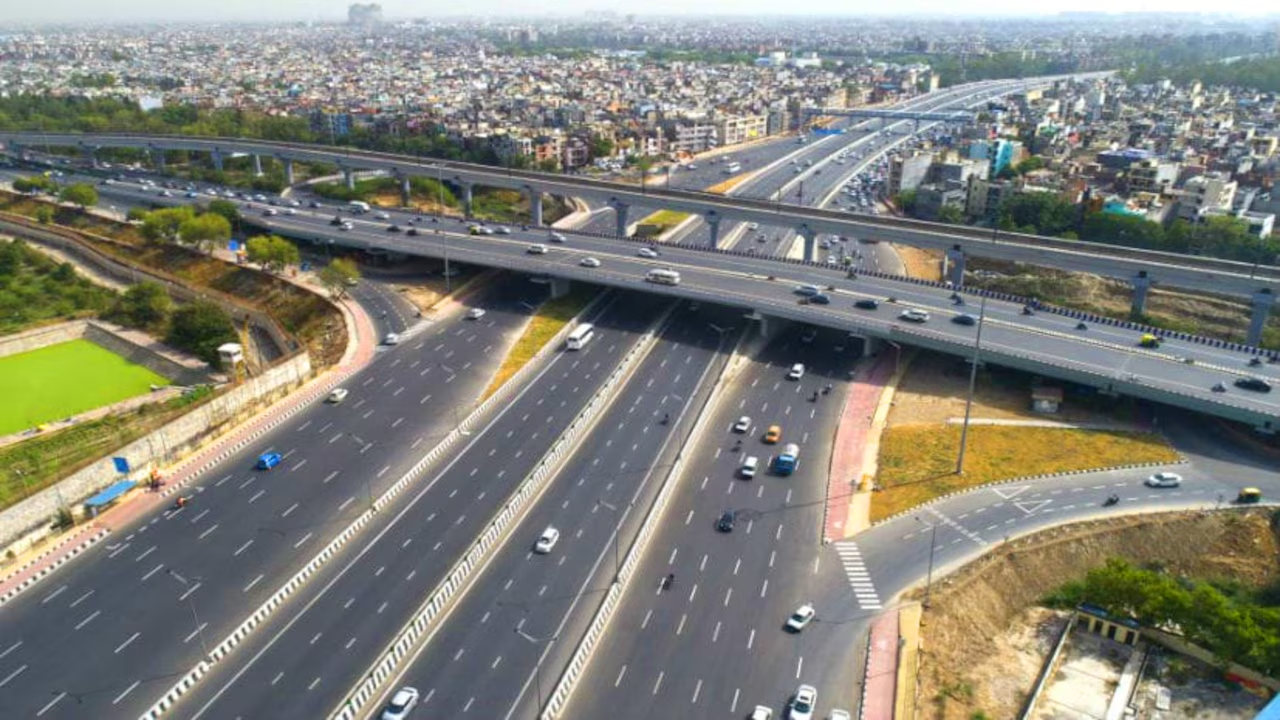Noida Expressway Introduces Heavy Fines for Vehicle Breakdowns, Ranging from Rs 5,000 to Rs 20,000
The Noida Expressway, a crucial route connecting Noida, Greater Noida, and Delhi, has become the latest stretch of road in the city to enforce a new set of traffic rules aimed at reducing the frequent congestion caused by vehicle breakdowns. Under the newly introduced “breakdown challan” system, traffic police are empowered to issue hefty fines, ranging from Rs 5,000 to Rs 20,000, and even impound vehicles that stop due to a breakdown and obstruct traffic.
The decision to impose fines for vehicle breakdowns comes as a response to the growing traffic congestion on the Noida Expressway. With an estimated 5 lakh commuters using the expressway daily, including those coming from key areas like the DND Flyway, Chilla Border, and sectors such as 15, 16, and 18, the frequent breakdowns of vehicles exacerbate an already difficult traffic situation, especially during peak hours. The Noida Expressway, which is one of the busiest roads in the National Capital Region, faces a continuous flow of traffic, and a vehicle breakdown often causes significant snarls. This can be frustrating not only for commuters but also for traffic authorities who have been struggling to manage the congestion. To address this, the police have announced a crackdown under Section 201 of the Motor Vehicles Act, which covers penalties for obstructing the free flow of traffic.
While it may seem like an unfair penalty for an unforeseen incident, the new breakdown challan rules are specifically designed to penalise vehicles that disrupt traffic flow when they break down. In particular, commercial vehicles are the primary target for the enforcement of these penalties. Private car drivers need not worry just yet, as the police have indicated that they will focus on commercial vehicles for now.
For commercial vehicles, fines can be imposed for a variety of reasons, including:
- Blocking the Traffic Flow: If a vehicle breakdown causes a significant disruption to traffic, fines will be levied.
- Lack of Required Documents: If a vehicle is found without a valid fitness certificate, pollution under control (PUC) certificate, or is overloaded, fines can be imposed.
- Failure to Meet Environmental Standards: Vehicles that don’t meet emission norms or exceed age limits (for example, petrol vehicles over 15 years old and diesel vehicles over 10 years old) will also attract fines.
The new rules apply to vehicles found to be obstructing the flow of traffic, and it’s important to note that the breakdown itself will not incur a fine unless it causes an obstruction. While the aim of these fines is to keep traffic moving smoothly, commercial vehicle drivers are raising concerns over the severity of the penalties. For example, a bus operator, Brajesh Mudgal, expressed frustration after his vehicle was impounded due to a tyre burst near the Mahamaya Flyover.
Although the breakdown was unexpected, the police seized the bus, citing that it obstructed traffic. Mudgal explained that the bus had been safely parked on the roadside, and the passengers had already been transferred to another vehicle. However, despite his efforts to explain the situation and even meeting with the Deputy Commissioner of Police (Traffic), he has been unsuccessful in having the vehicle released so far. His experience has sparked discussions among drivers about the fairness of the new fines, especially in cases of mechanical failures that are beyond their control. In addition to the fines, traffic authorities are continuously monitoring the expressway with a combination of ITMS cameras and manual patrols. In case of a breakdown, police are usually informed within five minutes and cranes are dispatched to clear the vehicle within 10 minutes. The authorities have also introduced diversions in certain parts of the expressway, such as from Chilla Border through Udyog Marg during peak hours, to ease congestion.
Despite these measures, the expressway continues to suffer from heavy traffic, and authorities are widening certain stretches, such as the 250-metre stretch between the Chilla Border and Mahamaya Flyover, to improve movement. These changes, while necessary, haven’t fully solved the ongoing issue of traffic jams. The introduction of “breakdown challans” on the Noida Expressway aims to address a recurring problem that has long affected commuters and traffic authorities alike. While the hefty fines for breakdowns are a necessary step to prevent further congestion, it is important that they are implemented with fairness. For now, the focus on commercial vehicles appears to be a reasonable step, but how this rule impacts individual drivers and the logistics industry will unfold in the coming months.




